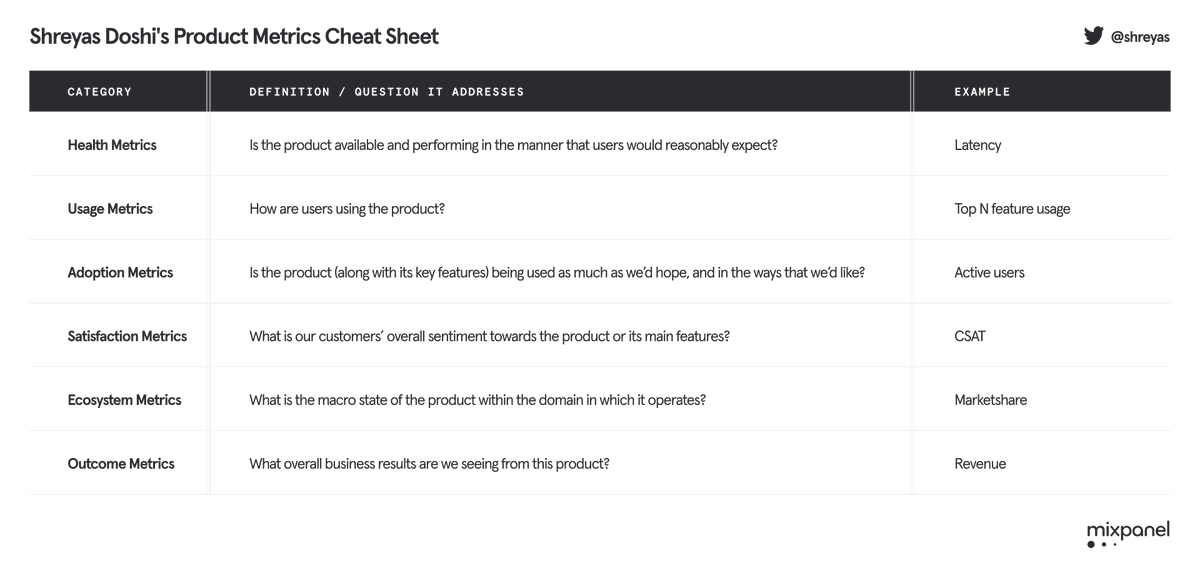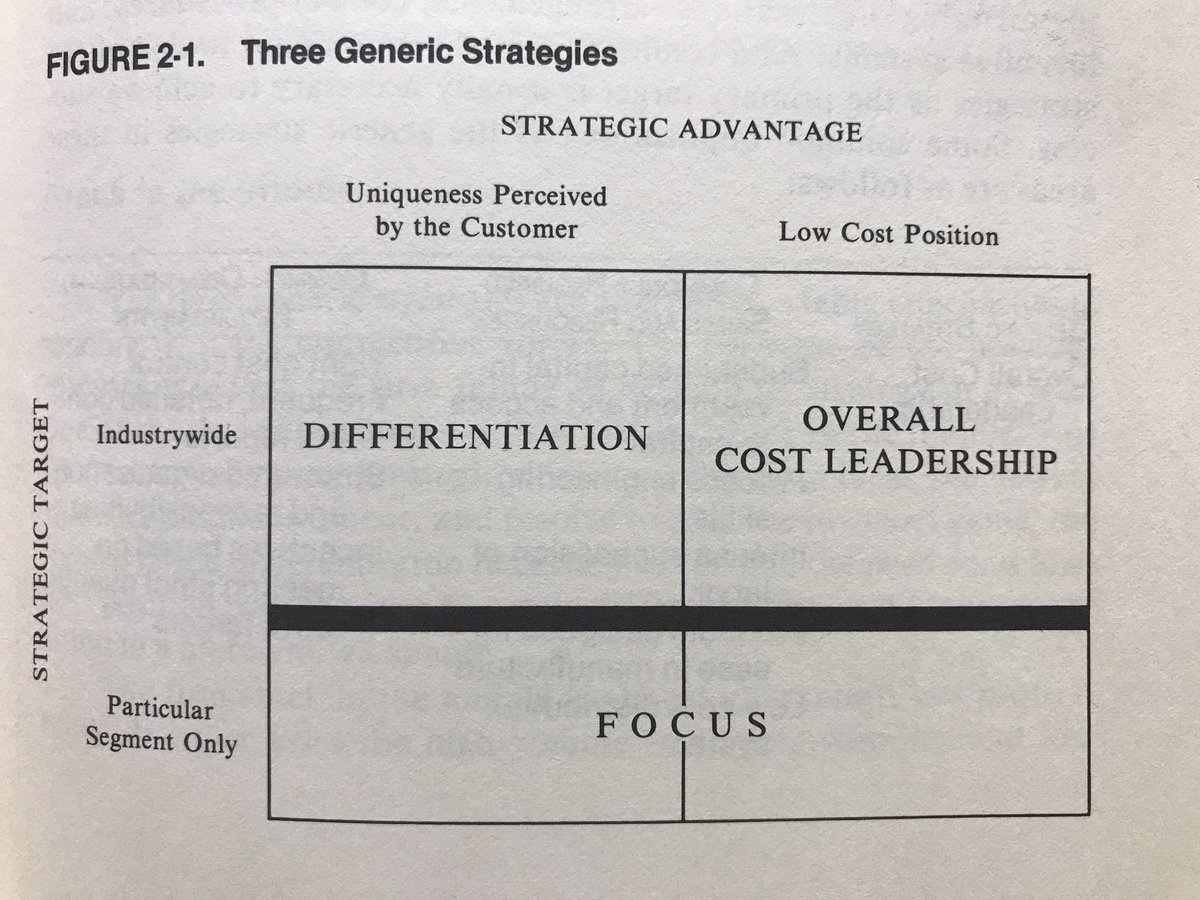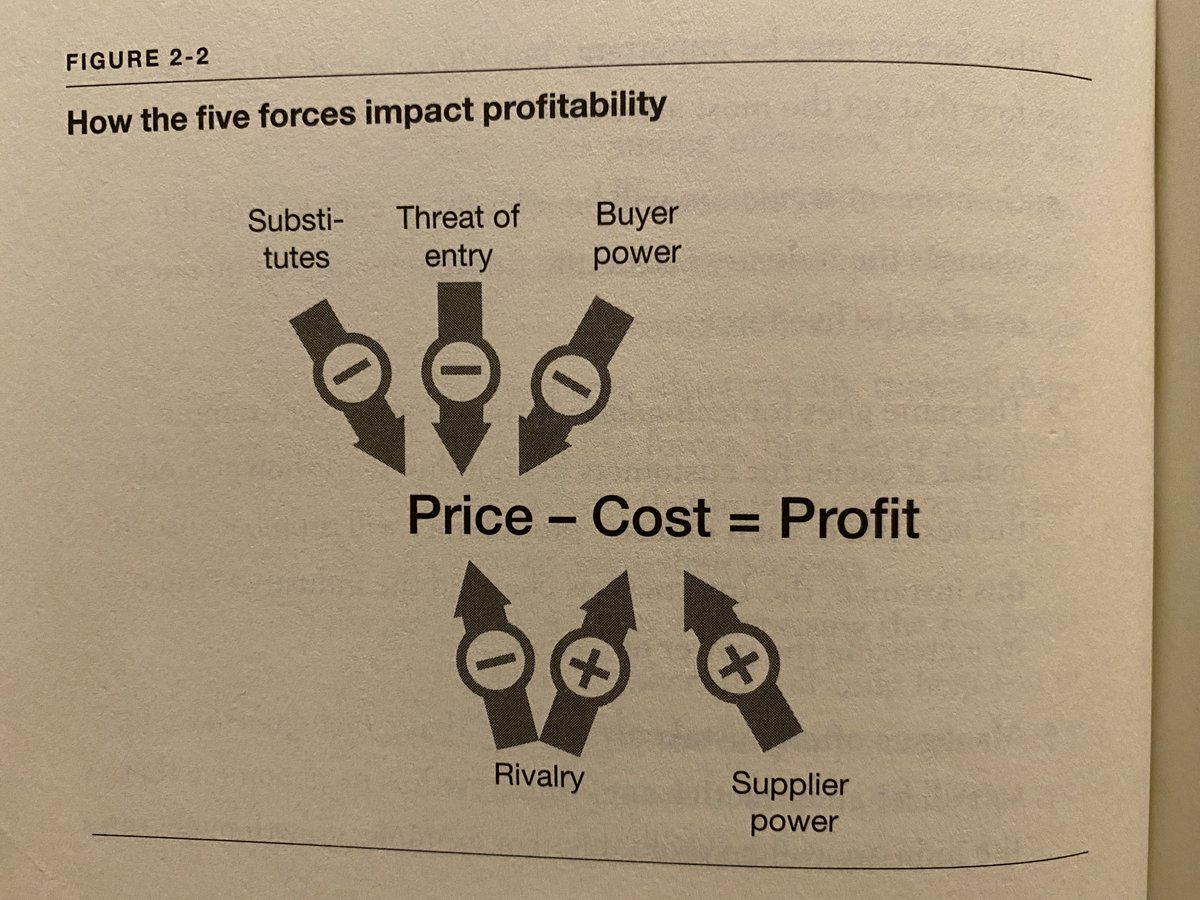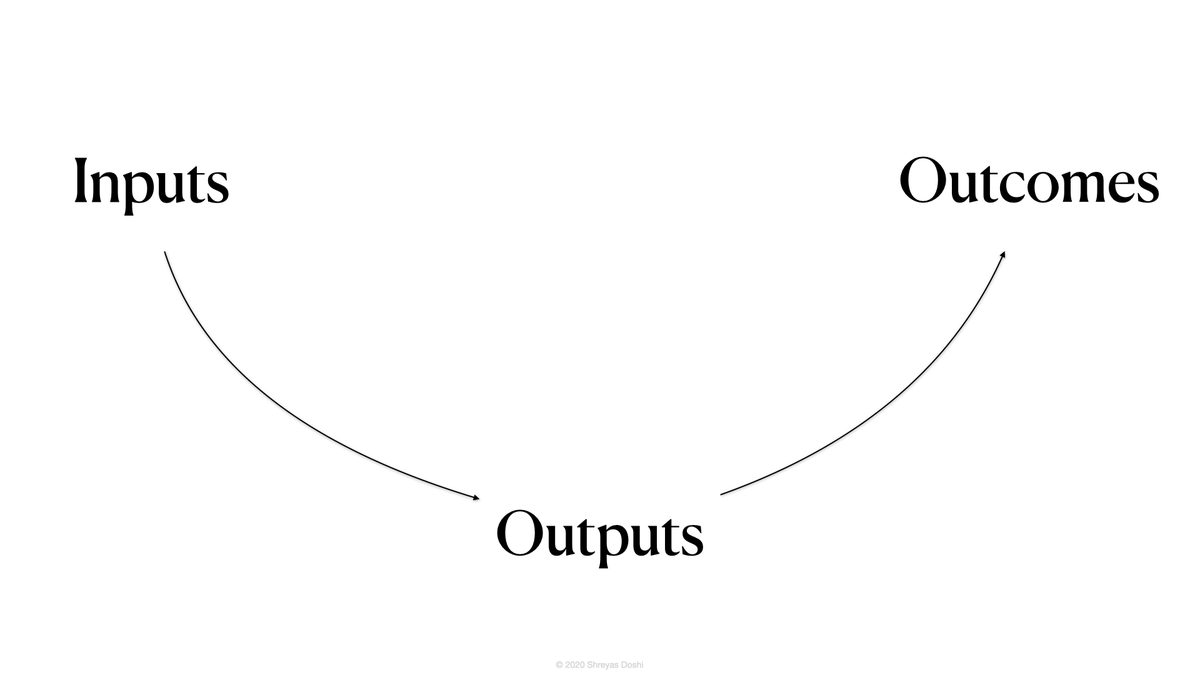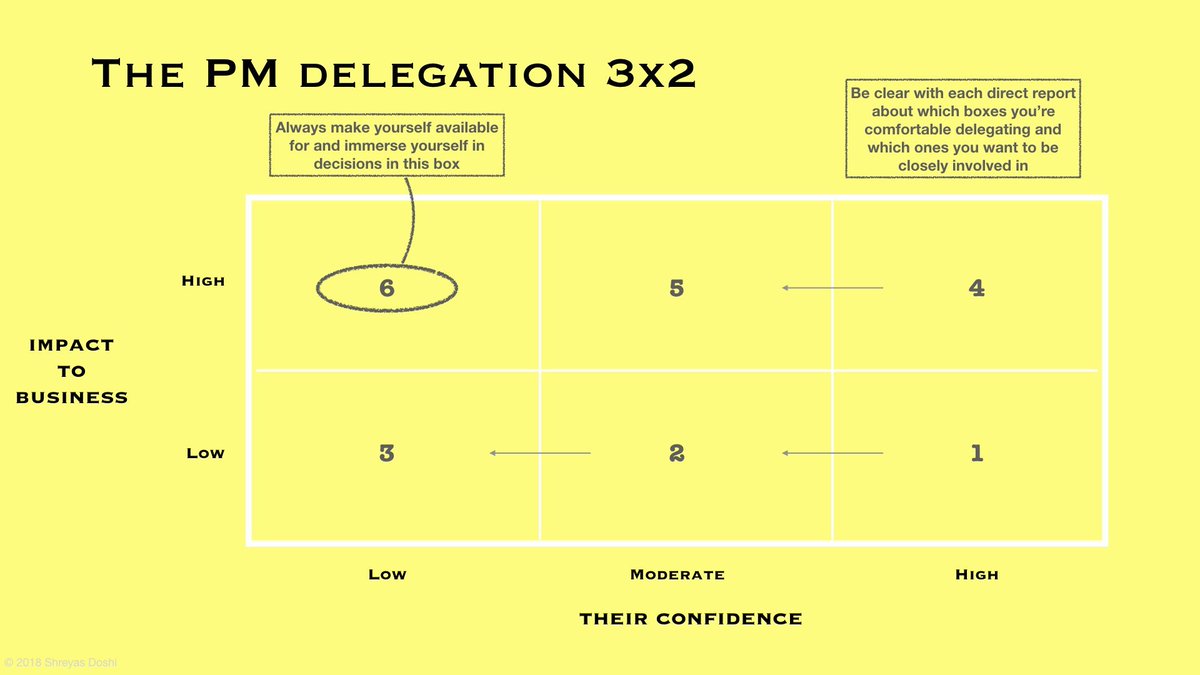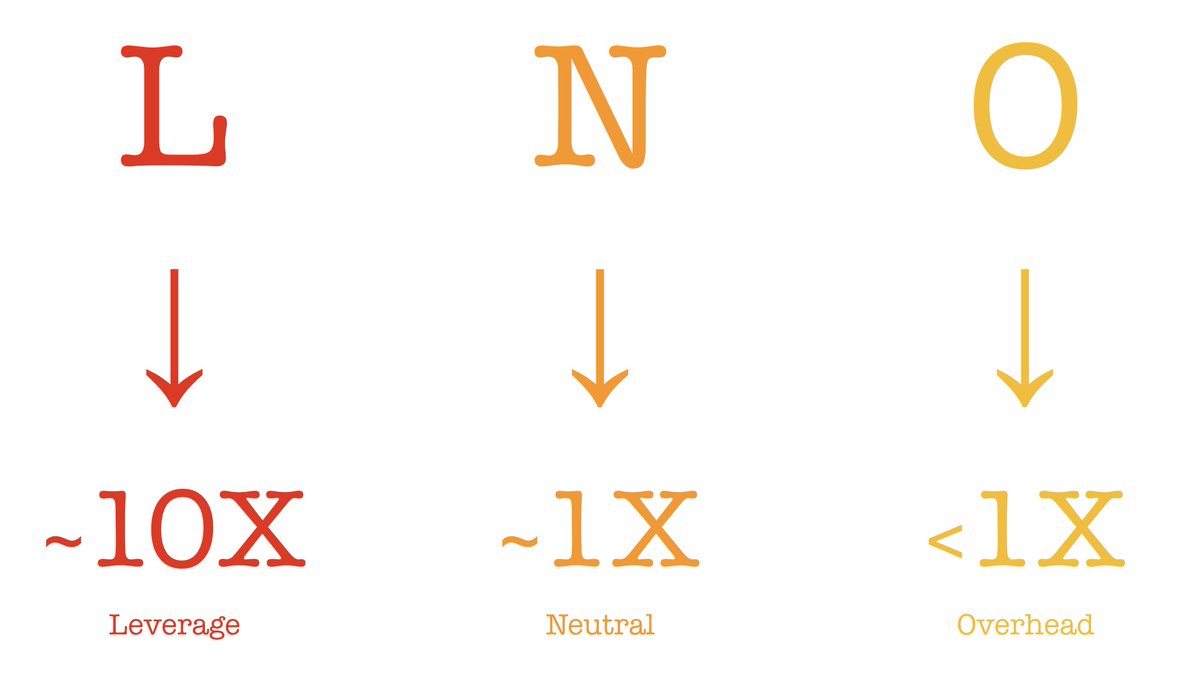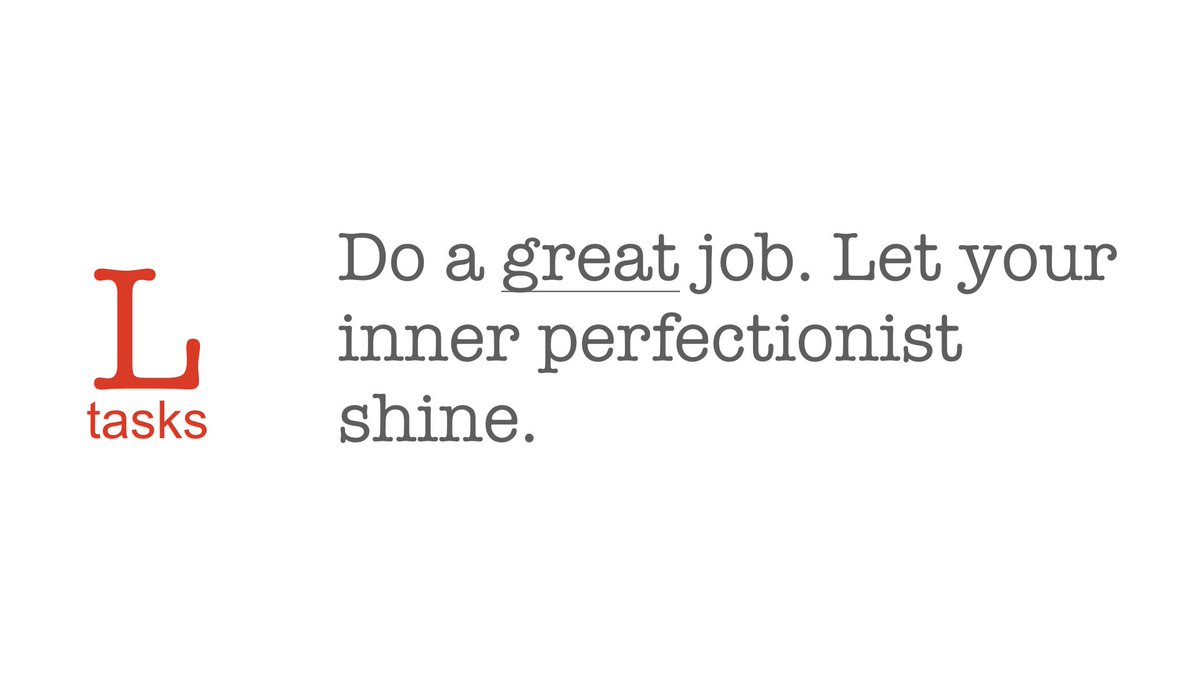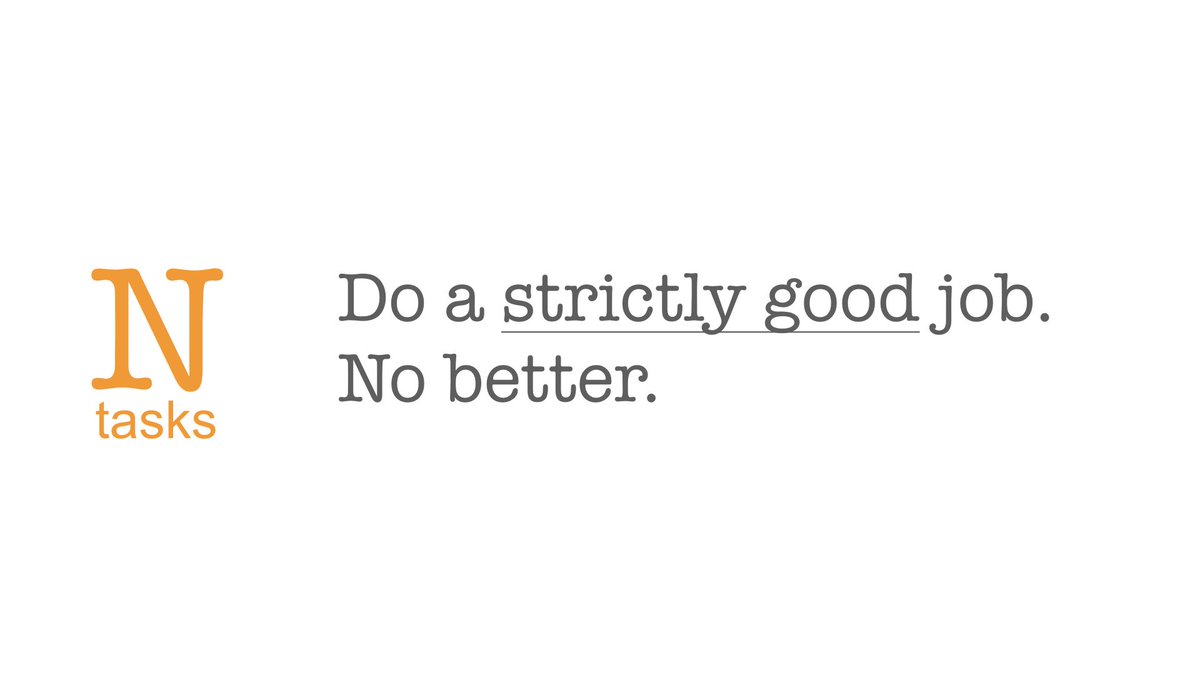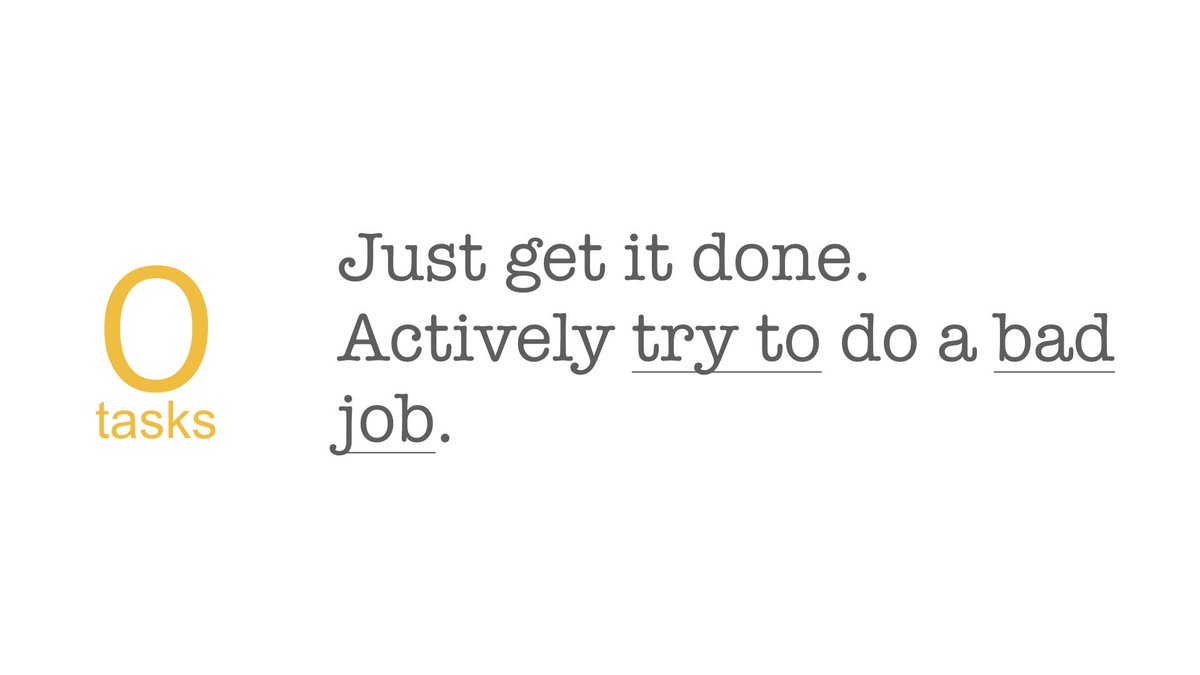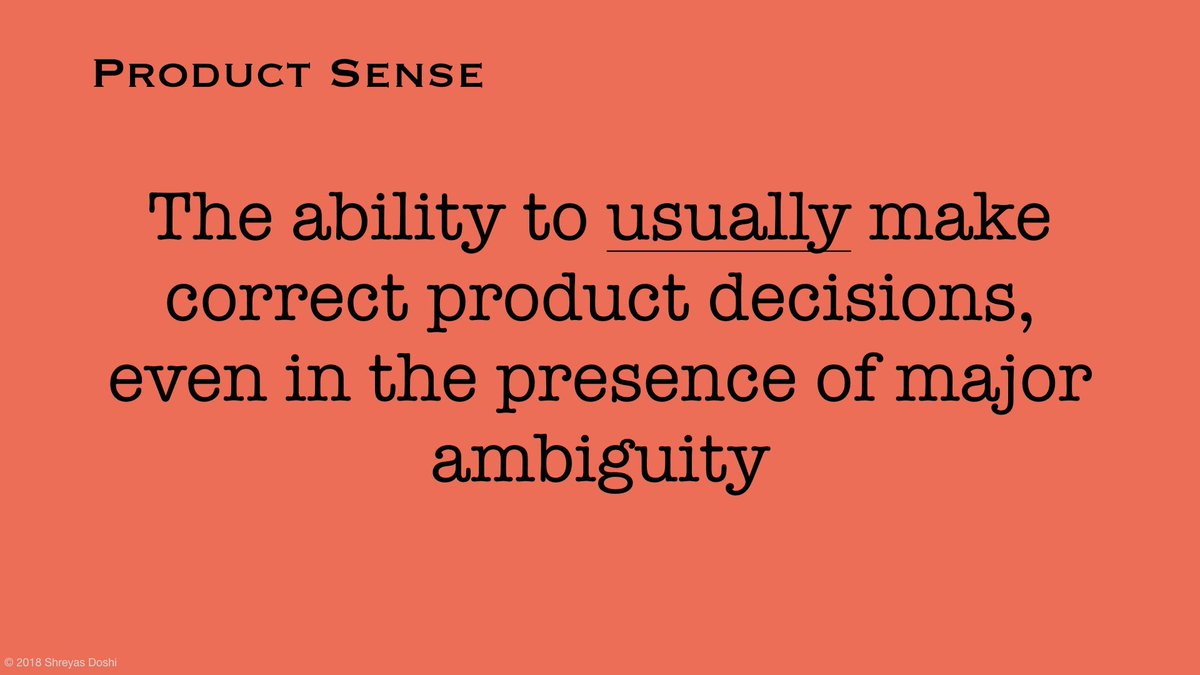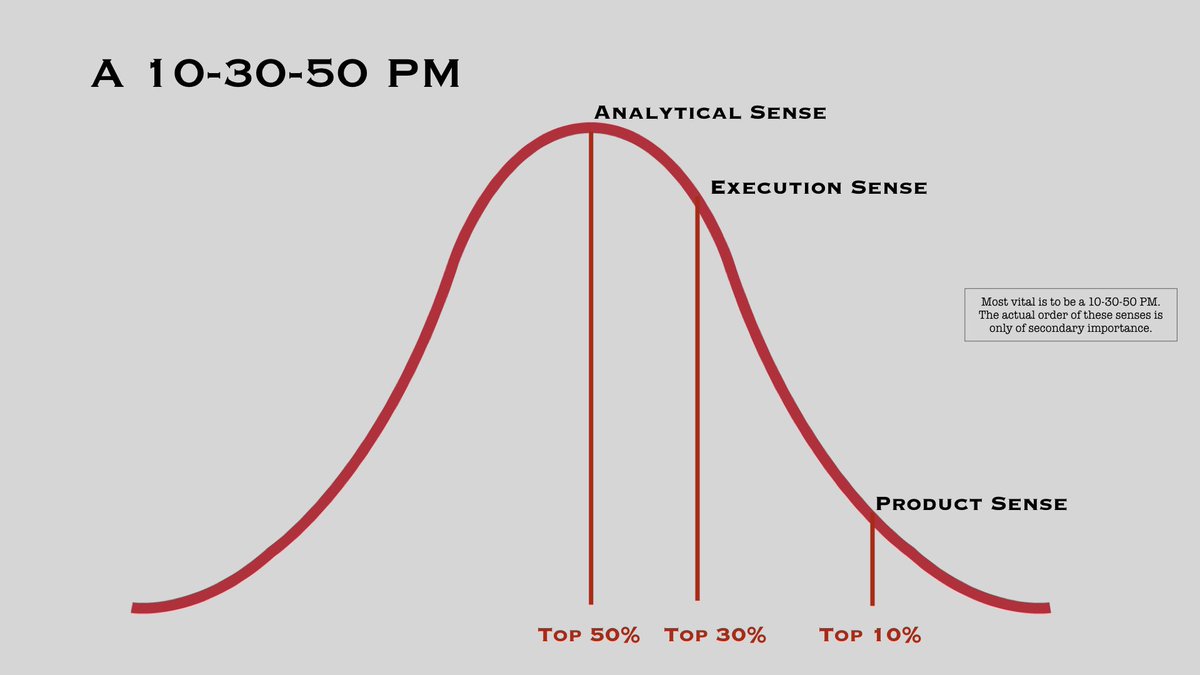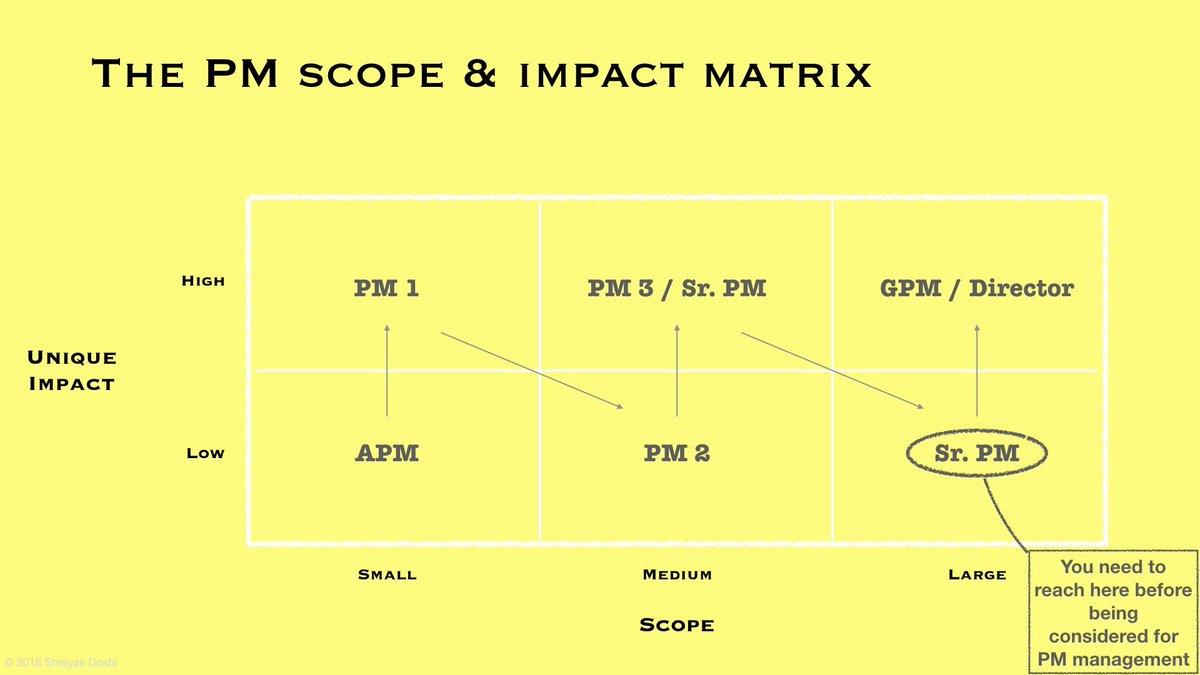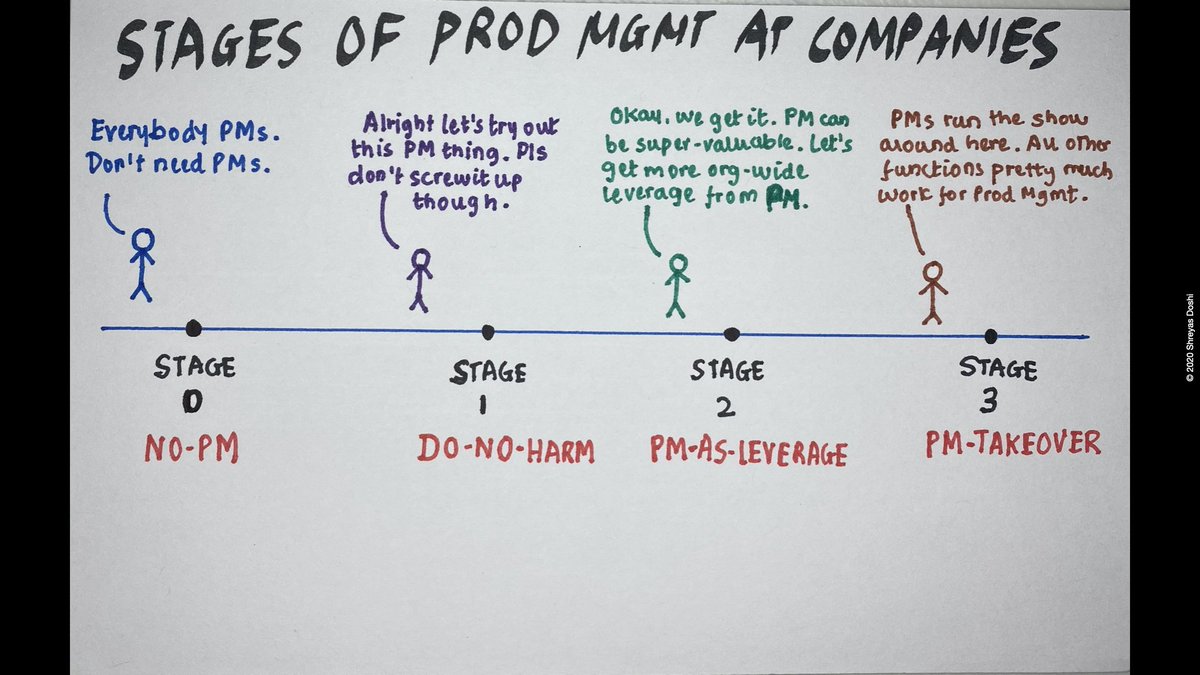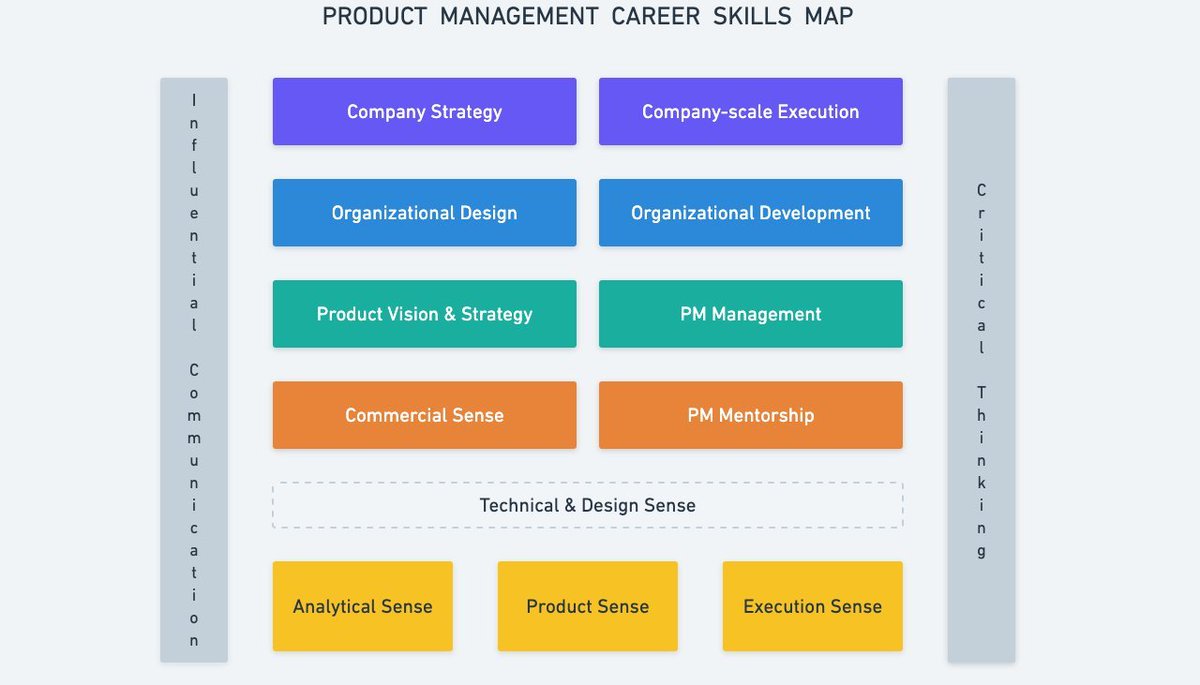A thread of product management frameworks:
(this might be useful if you are a product manager, product leader, or founder)
(this might be useful if you are a product manager, product leader, or founder)
Before we jump in:
Frameworks will not fix all your problems.
Used right, they should help you
1) better understand your context
2) create structure for problems
3) communicate ideas & solutions
I often use these frameworks in my product work, sometimes without realizing it.
Frameworks will not fix all your problems.
Used right, they should help you
1) better understand your context
2) create structure for problems
3) communicate ideas & solutions
I often use these frameworks in my product work, sometimes without realizing it.
1/
3X framework (Kent Beck)
A product can be in one of 3 stages
1. Explore
2. Expand
3. Extract
For product leaders this is the most vital framework to understand because almost every important decision should account for the stage your product is in. https://medium.com/@kentbeck_7670/fast-slow-in-3x-explore-expand-extract-6d4c94a7539">https://medium.com/@kentbeck...
3X framework (Kent Beck)
A product can be in one of 3 stages
1. Explore
2. Expand
3. Extract
For product leaders this is the most vital framework to understand because almost every important decision should account for the stage your product is in. https://medium.com/@kentbeck_7670/fast-slow-in-3x-explore-expand-extract-6d4c94a7539">https://medium.com/@kentbeck...
Examples of decisions you can make more rigorously with the 3X framework:
- optimize for inputs, outputs, or outcomes?
- set more qualitative or quantitative goals?
- how to measure progress?
- what skills to look for?
- how to evaluate PMs& #39; impact?
More: https://medium.com/@kentbeck_7670/the-product-development-triathlon-6464e2763c46">https://medium.com/@kentbeck...
- optimize for inputs, outputs, or outcomes?
- set more qualitative or quantitative goals?
- how to measure progress?
- what skills to look for?
- how to evaluate PMs& #39; impact?
More: https://medium.com/@kentbeck_7670/the-product-development-triathlon-6464e2763c46">https://medium.com/@kentbeck...
2/
5Qs for product rigor
1) Who is the customer?
2) What is the problem/opportunity?
3) What is the main customer benefit?
4) How do you know customers want this?
5) What is the customer experience?
This framework provides useful structure for product proposals, reviews, etc.
5Qs for product rigor
1) Who is the customer?
2) What is the problem/opportunity?
3) What is the main customer benefit?
4) How do you know customers want this?
5) What is the customer experience?
This framework provides useful structure for product proposals, reviews, etc.
Source: https://twitter.com/usamanaseem/status/1285620836372750337">https://twitter.com/usamanase...
3/
Product metrics categories
When conceiving product metrics, consider these categories & pick the right metrics across them:
1. Health metrics
2. Usage metrics
3. Adoption metrics
4. Satisfaction metrics
5. Ecosystem metrics
6. Outcome metrics
More:
https://twitter.com/shreyas/status/1304628719374544896">https://twitter.com/shreyas/s...
Product metrics categories
When conceiving product metrics, consider these categories & pick the right metrics across them:
1. Health metrics
2. Usage metrics
3. Adoption metrics
4. Satisfaction metrics
5. Ecosystem metrics
6. Outcome metrics
More:
https://twitter.com/shreyas/status/1304628719374544896">https://twitter.com/shreyas/s...
4/
Themes for product planning
Think through your allocation across a subset of these themes:
1) Differentiators
2) Tablestakes
3) Incrementals
4) Embarrassments (or “Broken Windows”)
5) Customer Specials (or “Large Customer Requests”)
6) Tech Foundation
7) Speculative Bets
Themes for product planning
Think through your allocation across a subset of these themes:
1) Differentiators
2) Tablestakes
3) Incrementals
4) Embarrassments (or “Broken Windows”)
5) Customer Specials (or “Large Customer Requests”)
6) Tech Foundation
7) Speculative Bets
Related thread: https://twitter.com/shreyas/status/1320105221570228224">https://twitter.com/shreyas/s...
5/
ICE prioritization (Sean Ellis)
Evaluate candidate features across expected Impact, Confidence, Ease.
I use it as a *heuristic* when prioritizing between a handful of fungible features, *not* as a formula for prioritized rank ordering.
More here: https://medium.com/@nimay/inside-product-introduction-to-feature-priority-using-ice-impact-confidence-ease-and-gist-5180434e5b15">https://medium.com/@nimay/in...
ICE prioritization (Sean Ellis)
Evaluate candidate features across expected Impact, Confidence, Ease.
I use it as a *heuristic* when prioritizing between a handful of fungible features, *not* as a formula for prioritized rank ordering.
More here: https://medium.com/@nimay/inside-product-introduction-to-feature-priority-using-ice-impact-confidence-ease-and-gist-5180434e5b15">https://medium.com/@nimay/in...
6/
Obvious, Easy, Possible (Jason Fried)
A practical way to think & talk about tension in interface design. In your UI, what features must be obvious, what features should be easy to find, and what features should be possible to discover?
More here: https://signalvnoise.com/posts/3047-the-obvious-the-easy-and-the-possible">https://signalvnoise.com/posts/304...
Obvious, Easy, Possible (Jason Fried)
A practical way to think & talk about tension in interface design. In your UI, what features must be obvious, what features should be easy to find, and what features should be possible to discover?
More here: https://signalvnoise.com/posts/3047-the-obvious-the-easy-and-the-possible">https://signalvnoise.com/posts/304...
7/
Customer Problems Stack Rank
A B2B/SaaS product framework to elicit what problems truly matter for your customers. It isn& #39;t enough that your product solves a problem for the customer. You need to understand where that problem ranks.
Related thread: https://twitter.com/shreyas/status/1376037565057261571">https://twitter.com/shreyas/s...
Customer Problems Stack Rank
A B2B/SaaS product framework to elicit what problems truly matter for your customers. It isn& #39;t enough that your product solves a problem for the customer. You need to understand where that problem ranks.
Related thread: https://twitter.com/shreyas/status/1376037565057261571">https://twitter.com/shreyas/s...
8/
the product vs. The Product
"the lowercase-p product" is the pixels you& #39;re directly working on.
But that’s not necessarily "The uppercase-p Product".
The Product is The Main Thing that makes or breaks the user value prop.
Sometimes the product & The Product are different.
the product vs. The Product
"the lowercase-p product" is the pixels you& #39;re directly working on.
But that’s not necessarily "The uppercase-p Product".
The Product is The Main Thing that makes or breaks the user value prop.
Sometimes the product & The Product are different.
Related thread: https://twitter.com/shreyas/status/1326795349227429894">https://twitter.com/shreyas/s...
9/
Porter& #39;s 3 Generic Strategies
For B2B/SaaS products, be intentional about which of Porter& #39;s 3 generic strategies you are picking
1. Broad differentiation
2. Overall cost leadership
3. Segment focus
Avoid getting "stuck in the middle".
(Competitive Advantage, chapter 2)
Porter& #39;s 3 Generic Strategies
For B2B/SaaS products, be intentional about which of Porter& #39;s 3 generic strategies you are picking
1. Broad differentiation
2. Overall cost leadership
3. Segment focus
Avoid getting "stuck in the middle".
(Competitive Advantage, chapter 2)
Related video: https://www.youtube.com/watch?v=V14kuqYEsxE">https://www.youtube.com/watch...
10/
Porter& #39;s 5 Forces
Understand how these 5 forces shape the market your product operates in:
1. Buyer bargaining power
2. Supplier bargaining power
3. Existing competitor rivalry
4. Threat of new entrants
5. Threat of substitute products
(ref: Understanding Michael Porter)
Porter& #39;s 5 Forces
Understand how these 5 forces shape the market your product operates in:
1. Buyer bargaining power
2. Supplier bargaining power
3. Existing competitor rivalry
4. Threat of new entrants
5. Threat of substitute products
(ref: Understanding Michael Porter)
11/
Helmer& #39;s 7 Strategic Powers
Be intentional about these powers as you devise your product strategy
1. Scale Economies
2. Network Effects
3. Counter-Positioning
4. Switching Costs
5. Branding
6. Cornered Resource
7. Process Power
More: https://florentcrivello.com/index.php/2018/07/29/mind-the-moat-a-7-powers-review/">https://florentcrivello.com/index.php...
Helmer& #39;s 7 Strategic Powers
Be intentional about these powers as you devise your product strategy
1. Scale Economies
2. Network Effects
3. Counter-Positioning
4. Switching Costs
5. Branding
6. Cornered Resource
7. Process Power
More: https://florentcrivello.com/index.php/2018/07/29/mind-the-moat-a-7-powers-review/">https://florentcrivello.com/index.php...
12/
Stages of strategy maturity
1: We don& #39;t need a strategy
2: We need a strategy but don& #39;t have one
3: We have a strategy but it isn’t articulated
4: We have an articulated strategy but execution is disconnected
5: We are cohesively executing on a known & rigorous strategy
Stages of strategy maturity
1: We don& #39;t need a strategy
2: We need a strategy but don& #39;t have one
3: We have a strategy but it isn’t articulated
4: We have an articulated strategy but execution is disconnected
5: We are cohesively executing on a known & rigorous strategy
13/
Jobs To Be Done (Christensen et al)
To innovate, you need to understand what jobs your customers are hiring your product for. Look beyond the obvious utility of your product. I like how JTBD emphasizes customer psychology & creative execution.
More: https://hbr.org/2016/09/know-your-customers-jobs-to-be-done">https://hbr.org/2016/09/k...
Jobs To Be Done (Christensen et al)
To innovate, you need to understand what jobs your customers are hiring your product for. Look beyond the obvious utility of your product. I like how JTBD emphasizes customer psychology & creative execution.
More: https://hbr.org/2016/09/know-your-customers-jobs-to-be-done">https://hbr.org/2016/09/k...
14/
Basic criteria for product comms
When communicating about your product (e.g. on your website, blog post, pdf case study, product video), make it easy for customers to get an answer these questions
1) What does it do?
2) Is it for me?
3) How good is it?
4) Should I act now?
Basic criteria for product comms
When communicating about your product (e.g. on your website, blog post, pdf case study, product video), make it easy for customers to get an answer these questions
1) What does it do?
2) Is it for me?
3) How good is it?
4) Should I act now?
15/
Team diagnosis framework
Are we defining the product right?
Are we defining right, but not building it fast?
Are we defining right, building fast, but not at desired quality?
Are we defining right, building fast, at desired quality, but not with expected business impact?
Team diagnosis framework
Are we defining the product right?
Are we defining right, but not building it fast?
Are we defining right, building fast, but not at desired quality?
Are we defining right, building fast, at desired quality, but not with expected business impact?
16/
The 3 levels of product work
1. The Execution level
2. The Impact level
3. The Optics level
Very important, esp. for product leaders to be intentional about the level at which they (and others) need to operate in a given context.
Related thread: https://twitter.com/shreyas/status/1370371128351354887">https://twitter.com/shreyas/s...
The 3 levels of product work
1. The Execution level
2. The Impact level
3. The Optics level
Very important, esp. for product leaders to be intentional about the level at which they (and others) need to operate in a given context.
Related thread: https://twitter.com/shreyas/status/1370371128351354887">https://twitter.com/shreyas/s...
17/
Inputs-Outputs-Outcomes
Product management is about collecting the right Inputs, converting them to the right Outputs, so we can get to the right Outcomes.
Like the 3X framework, this framework can help product people make better, context sensitive observations & decisions.
Inputs-Outputs-Outcomes
Product management is about collecting the right Inputs, converting them to the right Outputs, so we can get to the right Outcomes.
Like the 3X framework, this framework can help product people make better, context sensitive observations & decisions.
Take the perennial question of how to evaluate a Product Manager& #39;s impact.
The vast majority (easily >90%) of companies don& #39;t have a good answer to this question.
Here& #39;s how you might use the Inputs-Outputs-Outcomes framework to answer this question: https://twitter.com/shreyas/status/1344712552178040833">https://twitter.com/shreyas/s...
The vast majority (easily >90%) of companies don& #39;t have a good answer to this question.
Here& #39;s how you might use the Inputs-Outputs-Outcomes framework to answer this question: https://twitter.com/shreyas/status/1344712552178040833">https://twitter.com/shreyas/s...
18/
Basic B2B Product Strategy Framework
Your B2B product strategy must rigorously answer these 3 questions:
1) What customer segments are we targeting?
2) What differentiation will we create for them?
3) How will we reach these customers?
Related: https://twitter.com/shreyas/status/1384008853004578822">https://twitter.com/shreyas/s...
Basic B2B Product Strategy Framework
Your B2B product strategy must rigorously answer these 3 questions:
1) What customer segments are we targeting?
2) What differentiation will we create for them?
3) How will we reach these customers?
Related: https://twitter.com/shreyas/status/1384008853004578822">https://twitter.com/shreyas/s...
19/
Agreed Target Quality Framework (h/t Jeff Seibert)
Very effective for proactively & rigorously addressing Eng/Design/PM conflict when building a product.
Instead of litigating 100s of details just before launch, discuss upfront the quality level you are aiming for (and why)
Agreed Target Quality Framework (h/t Jeff Seibert)
Very effective for proactively & rigorously addressing Eng/Design/PM conflict when building a product.
Instead of litigating 100s of details just before launch, discuss upfront the quality level you are aiming for (and why)
20/
Delegation Framework (h/t Keith Rabois)
This framework is especially useful for senior product managers & leaders to create clarity on the decisions team members can make on their own and the decisions you’d like to make with them.
Learn more here:
https://twitter.com/shreyas/status/1055740120156893184">https://twitter.com/shreyas/s...
Delegation Framework (h/t Keith Rabois)
This framework is especially useful for senior product managers & leaders to create clarity on the decisions team members can make on their own and the decisions you’d like to make with them.
Learn more here:
https://twitter.com/shreyas/status/1055740120156893184">https://twitter.com/shreyas/s...
21/
LNO Effectiveness Framework
This framework improved the quality of my life as a PM & my work more than anything else I& #39;ve encountered.
The main insight is that all your tasks are not created equal. There are 3 types of PM tasks:
1) Leverage
2) Neutral
3) Overhead
LNO Effectiveness Framework
This framework improved the quality of my life as a PM & my work more than anything else I& #39;ve encountered.
The main insight is that all your tasks are not created equal. There are 3 types of PM tasks:
1) Leverage
2) Neutral
3) Overhead
Before taking on a task, identify what type of task it is. Take more time than you would for Leverage tasks, and create the time to do that by taking less time for Neutral & Overhead tasks.
(especially impt for senior PMs & leaders)
Concrete example here https://twitter.com/shreyas/status/1223830488973889536">https://twitter.com/shreyas/s...
(especially impt for senior PMs & leaders)
Concrete example here https://twitter.com/shreyas/status/1223830488973889536">https://twitter.com/shreyas/s...
22/
The 3 Essential Senses of a PM
1. Execution sense
2. Analytical sense
3. Product sense
It is important for PMs to understand these senses, identify their superpower, identify any liabilities & be intentional about their growth.
To learn more:
https://twitter.com/shreyas/status/1055720049879773186">https://twitter.com/shreyas/s...
The 3 Essential Senses of a PM
1. Execution sense
2. Analytical sense
3. Product sense
It is important for PMs to understand these senses, identify their superpower, identify any liabilities & be intentional about their growth.
To learn more:
https://twitter.com/shreyas/status/1055720049879773186">https://twitter.com/shreyas/s...
23/
The 10-30-50 PM
To make a major impact with your products, accelerate your career, get the opportunity to lead other PMs & create tremendous career optionality, aim to become a 10-30-50 PM: top 10% in one of the senses, top 30% in another one, and top 50% in the third.
The 10-30-50 PM
To make a major impact with your products, accelerate your career, get the opportunity to lead other PMs & create tremendous career optionality, aim to become a 10-30-50 PM: top 10% in one of the senses, top 30% in another one, and top 50% in the third.
To learn more, check out this thread: https://twitter.com/shreyas/status/1055725971163176960">https://twitter.com/shreyas/s...
24/
Components of Product Sense
Product sense has 3 components:
1. Cognitive Empathy
2. Domain Knowledge
3. Creativity
To improve product sense, work on each of these.
Thread on Cognitive Empathy for PMs:
https://twitter.com/shreyas/status/1291764637545816065
To">https://twitter.com/shreyas/s... learn more:
https://blog.tryexponent.com/improve-your-product-sense/">https://blog.tryexponent.com/improve-y...
Components of Product Sense
Product sense has 3 components:
1. Cognitive Empathy
2. Domain Knowledge
3. Creativity
To improve product sense, work on each of these.
Thread on Cognitive Empathy for PMs:
https://twitter.com/shreyas/status/1291764637545816065
To">https://twitter.com/shreyas/s... learn more:
https://blog.tryexponent.com/improve-your-product-sense/">https://blog.tryexponent.com/improve-y...
25/
Scope/Impact matrix for PM career growth
At any point in your PM career, you’re managing a certain amount of product scope and you have a specific degree of unique impact.
And you grow by alternately increasing your impact and your scope.
For more:
https://twitter.com/shreyas/status/1055718666384302081">https://twitter.com/shreyas/s...
Scope/Impact matrix for PM career growth
At any point in your PM career, you’re managing a certain amount of product scope and you have a specific degree of unique impact.
And you grow by alternately increasing your impact and your scope.
For more:
https://twitter.com/shreyas/status/1055718666384302081">https://twitter.com/shreyas/s...
26/
The SMART framework for PM feedback
Product leaders should give level-specific guidance on:
Skills–to build/enhance
Mindset–to be more effective e.g. high agency
Activities–to improve product/team
Results–expected Outputs+Outcomes
Training–resources to achieve all this
The SMART framework for PM feedback
Product leaders should give level-specific guidance on:
Skills–to build/enhance
Mindset–to be more effective e.g. high agency
Activities–to improve product/team
Results–expected Outputs+Outcomes
Training–resources to achieve all this
27/
Types of Product Managers (Sachin Rekhi)
1) Builders
2) Tuners
3) Innovators
As a hiring manager, create clarity (for yourself first & then for candidates) on what primary type (or primary hat, if you wish) is best suited for a given role
More here: https://twitter.com/shreyas/status/1328372392566030336">https://twitter.com/shreyas/s...
Types of Product Managers (Sachin Rekhi)
1) Builders
2) Tuners
3) Innovators
As a hiring manager, create clarity (for yourself first & then for candidates) on what primary type (or primary hat, if you wish) is best suited for a given role
More here: https://twitter.com/shreyas/status/1328372392566030336">https://twitter.com/shreyas/s...
28/
Types of Product Leaders
1) The Operator
2) The Craftsperson
3) The Visionary
It is important for you as a startup founder/CEO, PM or product leader to deeply understand these types/hats as you make decisions on whom to hire or whom to work for
More https://twitter.com/shreyas/status/1375491624059334656">https://twitter.com/shreyas/s...
Types of Product Leaders
1) The Operator
2) The Craftsperson
3) The Visionary
It is important for you as a startup founder/CEO, PM or product leader to deeply understand these types/hats as you make decisions on whom to hire or whom to work for
More https://twitter.com/shreyas/status/1375491624059334656">https://twitter.com/shreyas/s...
Okay, this is where I will stop for now.
Reply to this tweet with any great frameworks I missed.
 https://abs.twimg.com/emoji/v2/... draggable="false" alt="💙" title="Blaues Herz" aria-label="Emoji: Blaues Herz">
https://abs.twimg.com/emoji/v2/... draggable="false" alt="💙" title="Blaues Herz" aria-label="Emoji: Blaues Herz"> https://abs.twimg.com/emoji/v2/... draggable="false" alt="👍🏾" title="Daumen hoch (durchschnittlich dunkler Hautton)" aria-label="Emoji: Daumen hoch (durchschnittlich dunkler Hautton)">
https://abs.twimg.com/emoji/v2/... draggable="false" alt="👍🏾" title="Daumen hoch (durchschnittlich dunkler Hautton)" aria-label="Emoji: Daumen hoch (durchschnittlich dunkler Hautton)"> https://abs.twimg.com/emoji/v2/... draggable="false" alt="🙏🏾" title="Gefaltete Hände (durchschnittlich dunkler Hautton)" aria-label="Emoji: Gefaltete Hände (durchschnittlich dunkler Hautton)">
https://abs.twimg.com/emoji/v2/... draggable="false" alt="🙏🏾" title="Gefaltete Hände (durchschnittlich dunkler Hautton)" aria-label="Emoji: Gefaltete Hände (durchschnittlich dunkler Hautton)">
Reply to this tweet with any great frameworks I missed.
Back to the top of this thread: https://twitter.com/shreyas/status/1399042778613485578">https://twitter.com/shreyas/s...
29/
Double Diamond process
This is a practical Diverge-Converge framework that& #39;s useful for ambiguous product discovery. Likely the most salient part here is the vocabulary to help get stakeholders on the same page & avoid rushing the discovery process.
https://www.designcouncil.org.uk/news-opinion/what-framework-innovation-design-councils-evolved-double-diamond">https://www.designcouncil.org.uk/news-opin...
Double Diamond process
This is a practical Diverge-Converge framework that& #39;s useful for ambiguous product discovery. Likely the most salient part here is the vocabulary to help get stakeholders on the same page & avoid rushing the discovery process.
https://www.designcouncil.org.uk/news-opinion/what-framework-innovation-design-councils-evolved-double-diamond">https://www.designcouncil.org.uk/news-opin...
30/
Segmentation & positioning maps
A vital product strategy lesson that many PMs miss: your customer segmentation should be tailored to your product & its category. Generic axes (e.g. SMB vs enterprise) are usually not super-useful.
A+ example from Understanding Michael Porter
Segmentation & positioning maps
A vital product strategy lesson that many PMs miss: your customer segmentation should be tailored to your product & its category. Generic axes (e.g. SMB vs enterprise) are usually not super-useful.
A+ example from Understanding Michael Porter
31/
Possible stages of Prod Mgmt in a company
Stage 0: No-PM
Stage 1: Do-No-Harm
Stage 2: PM-As-Leverage
Stage 3: PM-Takeover
None of these is the "right" stage, it all depends on the specifics of the company & its challenges. But avoid reaching Stage 3 too early, it& #39;s not fun.
Possible stages of Prod Mgmt in a company
Stage 0: No-PM
Stage 1: Do-No-Harm
Stage 2: PM-As-Leverage
Stage 3: PM-Takeover
None of these is the "right" stage, it all depends on the specifics of the company & its challenges. But avoid reaching Stage 3 too early, it& #39;s not fun.
Some PMs actively seek highly "PM-Driven" companies i.e. Stage 3, not realizing that product work at such companies is either not actually fun or the products produced are mediocre at best. More here: https://twitter.com/shreyas/status/1274835476810096640">https://twitter.com/shreyas/s...
32/
Four Types of Product Risk (Cagan)
1. Value risk
2. Usability risk
3. Feasibility risk
4. Business viability risk
Learn more here: https://svpg.com/four-big-risks/ ">https://svpg.com/four-big-...
Four Types of Product Risk (Cagan)
1. Value risk
2. Usability risk
3. Feasibility risk
4. Business viability risk
Learn more here: https://svpg.com/four-big-risks/ ">https://svpg.com/four-big-...
33/
PM Career Skills Map
This framework covers the skills PMs need to develop, by level & scope.
More in this thread:
https://twitter.com/shreyas/status/1264621650663727104">https://twitter.com/shreyas/s...
PM Career Skills Map
This framework covers the skills PMs need to develop, by level & scope.
More in this thread:
https://twitter.com/shreyas/status/1264621650663727104">https://twitter.com/shreyas/s...

 Read on Twitter
Read on Twitter